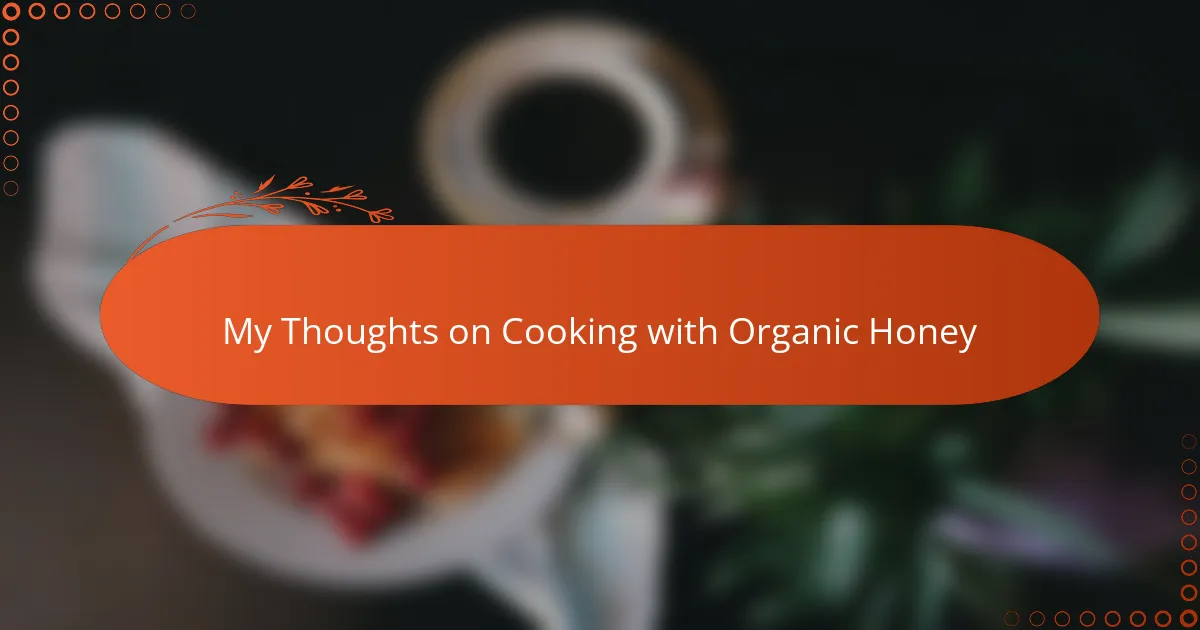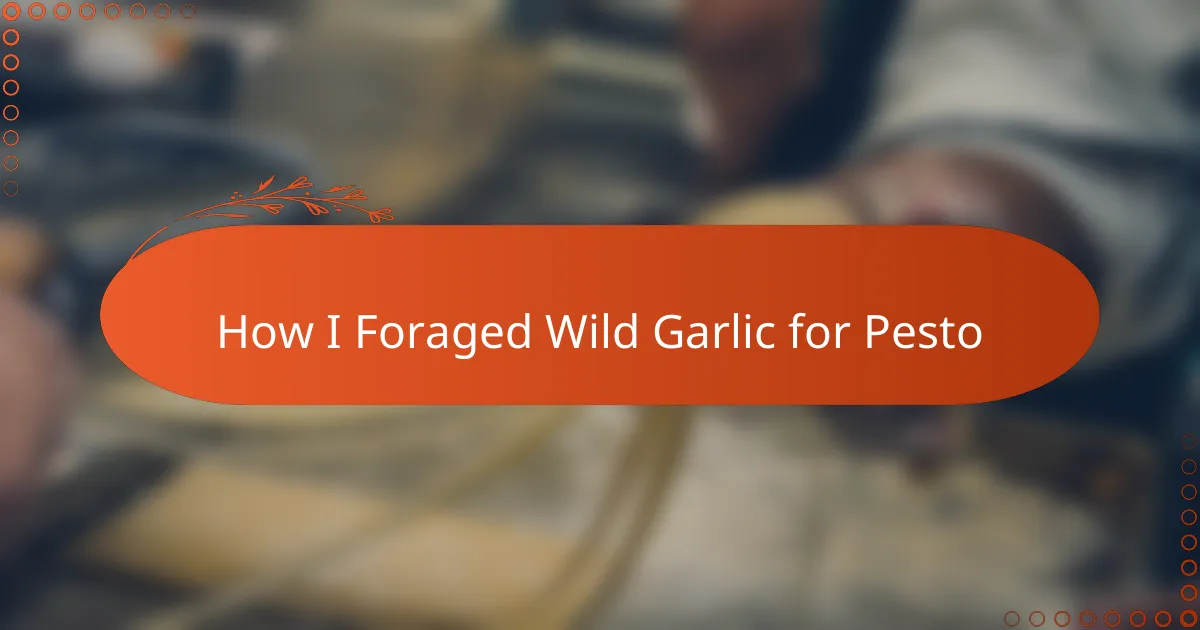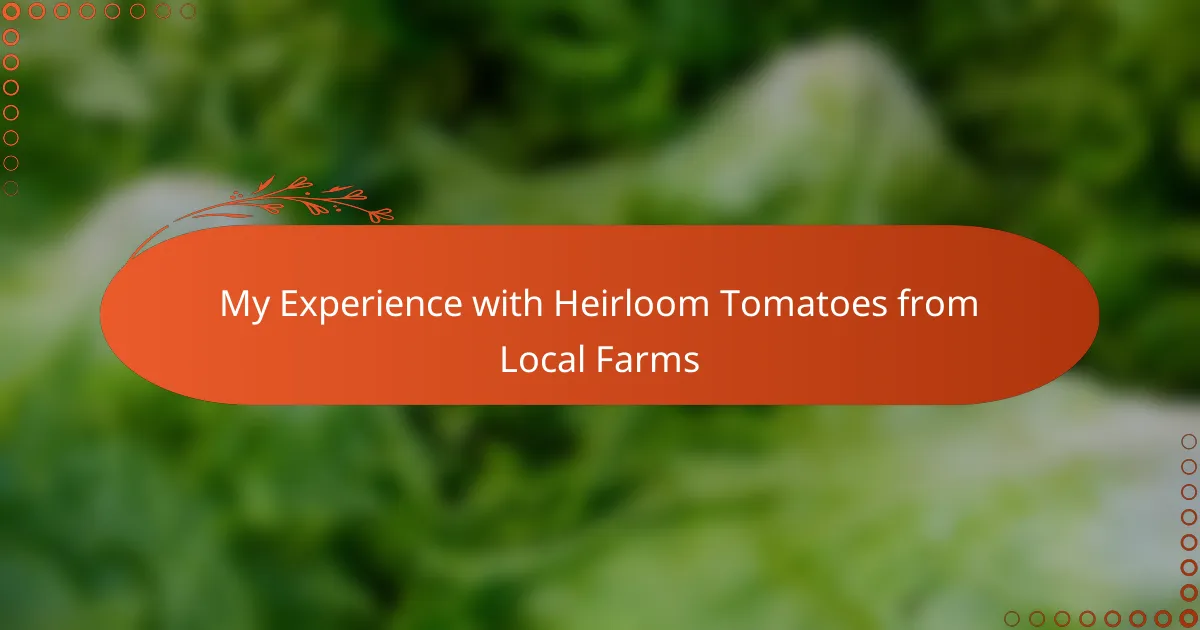Key takeaways
- Seasonal mushrooms enhance the flavor and nutritional value of dishes, encouraging a deeper connection to nature’s cycles.
- Homesteading cooking emphasizes simplicity, using fresh, local ingredients, and fosters creativity through ingredient limitations.
- Proper mushroom selection and cooking techniques, such as avoiding overcrowding and careful seasoning, are crucial for achieving the best flavor and texture.
- Documenting cooking experiments can lead to improved skills and foster a sense of community through shared experiences and ideas.
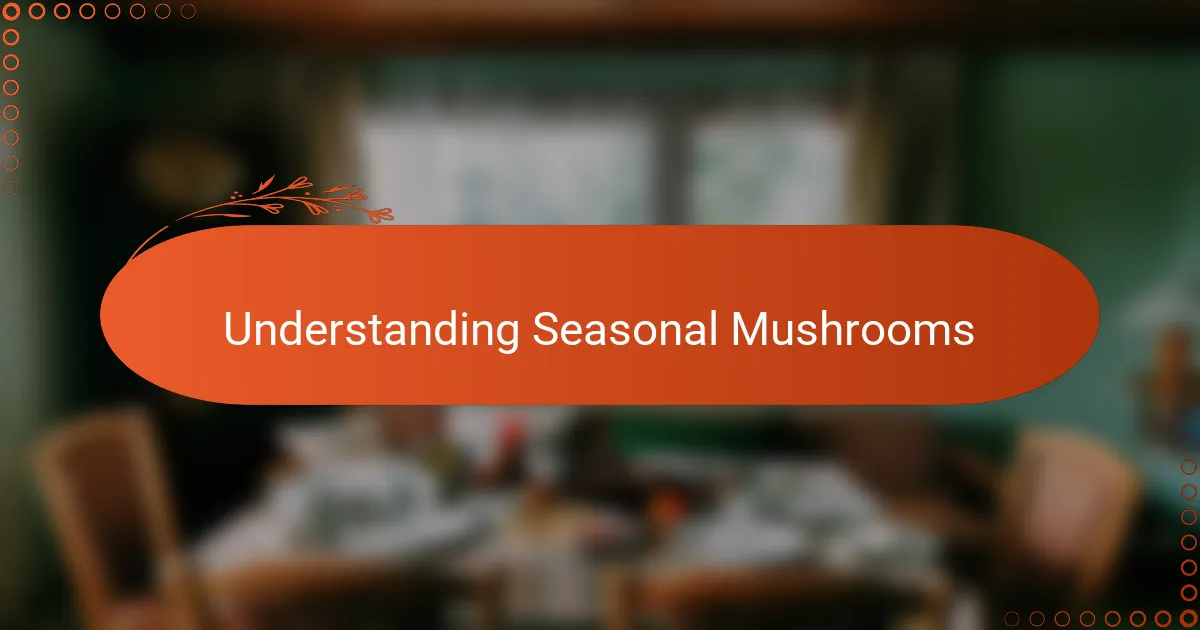
Understanding Seasonal Mushrooms
Seasonal mushrooms are fascinating because they reflect the rhythms of nature in the most tangible way. I remember my first foray into seasonal foraging; the thrill of spotting clusters of chanterelles in autumn felt like discovering hidden treasure. Have you ever noticed how different mushrooms show up at specific times, like nature’s own calendar?
From my experience, understanding when and where to find these mushrooms deepens the connection to the environment and enhances the flavors you can bring into your kitchen. It’s not just about taste; it’s about appreciating the cycle of growth that wild mushrooms follow. Knowing this changed how I planned my meals throughout the year, always anticipating the unique varieties that each season offers.
Why does this matter for homestead cooking? Because seasonal mushrooms are at their peak freshness and nutritional value when harvested in sync with their natural life cycles. This means every dish you prepare tastes vibrant and authentic, capturing the essence of the season itself—something I find truly rewarding as a home cook.
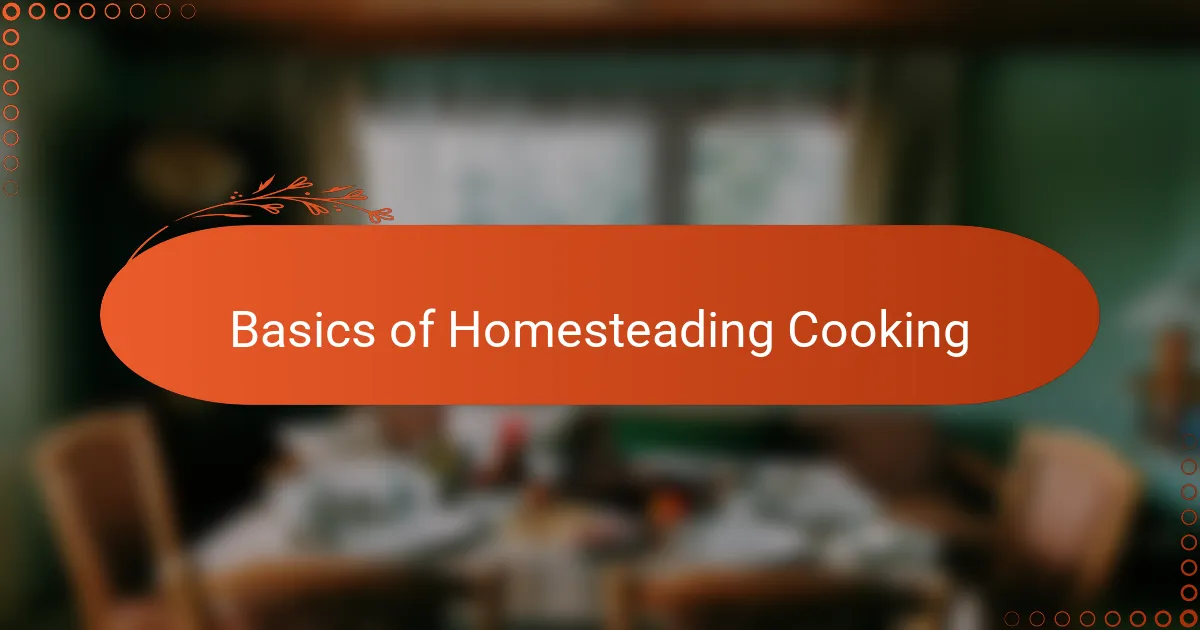
Basics of Homesteading Cooking
Cooking from the homestead is all about simplicity and respect for the ingredients. I’ve found that the basics revolve around using what’s fresh and available—no fancy gadgets, just good old-fashioned techniques that bring out natural flavors. Have you tried slow-cooking or preserving produce straight from your garden? It really makes a difference in taste and satisfaction.
Another key for me has been learning to work with seasonal rhythms beyond just mushrooms. It’s like tuning in to the land’s own schedule—knowing when to harvest, how to store, and when to cook certain items. This mindset transformed my kitchen, turning everyday meals into celebrations of nature’s bounty. It’s a humble approach, but I think that’s where the magic happens.
Finally, homesteading cooking encourages creativity with limitations. When certain ingredients aren’t available, you find new ways to substitute or reinvent dishes. I remember once running out of some staple spices and having to rely entirely on fresh herbs from my garden—that meal ended up being one of the most flavorful I ever made. Doesn’t cooking under these conditions challenge and inspire you too?
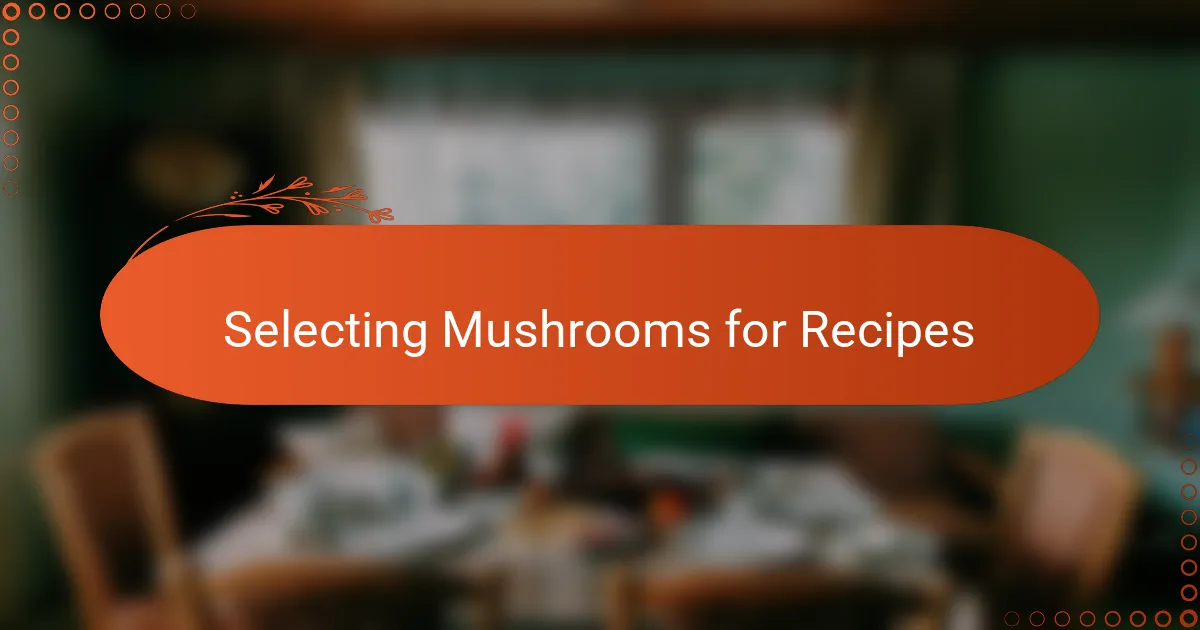
Selecting Mushrooms for Recipes
Choosing the right mushrooms for your recipes always feels like a small adventure to me. I’ve learned that picking fresh, firm mushrooms with no spots or sliminess makes all the difference in texture and flavor. Have you ever bitten into a dish only to be disappointed by a rubbery or bland mushroom? That’s usually a sign you didn’t select the best ones.
When I started experimenting, I realized that knowing the variety mattered just as much as freshness. For instance, I love how earthy shiitakes bring depth, while delicate oyster mushrooms add a subtle sweetness. It’s fascinating how each type transforms the dish in its own unique way—don’t you think that variety invites creativity in cooking?
Also, sourcing mushrooms from trusted places or directly from your foraging grounds gives me peace of mind. There’s something rewarding about picking or choosing mushrooms you know are safe and sustainable. It’s not just a matter of taste but respecting the environment and ensuring a delicious, worry-free meal every time.
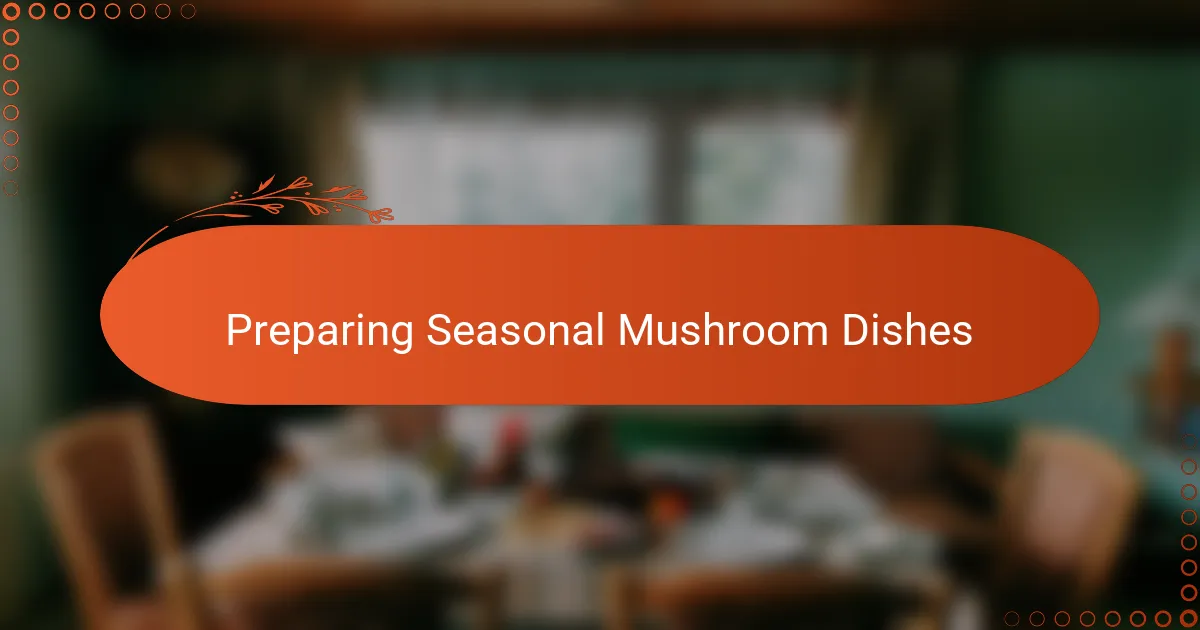
Preparing Seasonal Mushroom Dishes
Preparing seasonal mushroom dishes requires a gentle touch, in my opinion. I usually start by cleaning them carefully with a soft brush or damp cloth; soaking mushrooms can make them soggy and dull their flavor. Have you ever tried sautéing just-picked morels with butter and fresh thyme? That simple step unlocks an incredible earthiness that honestly feels like a gift from the forest.
Another thing I discovered is that timing matters when cooking mushrooms. I tend to add them later in a recipe to preserve their texture—overcooking turns them rubbery, which really takes away from the dish. For example, during my experiment with a wild mushroom stew, I waited until the last few minutes to toss in chanterelles, and that created a delightful contrast between tender vegetables and robust, chewy mushrooms.
Finally, seasoning is key but subtlety works best with seasonal mushrooms. Too much salt or overpowering spices can mask their delicate flavors. I remember one dish where a pinch of freshly ground pepper and a splash of lemon juice made the mushrooms sing, highlighting their natural umami without overshadowing it. Isn’t it amazing how such small details make all the difference?
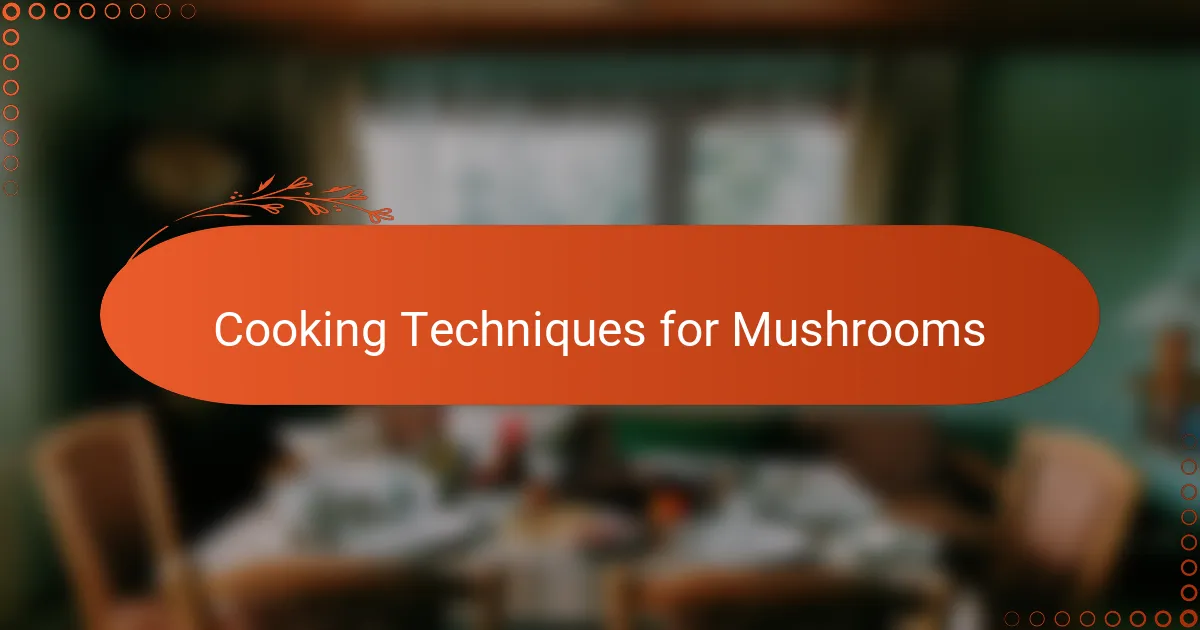
Cooking Techniques for Mushrooms
When it comes to cooking mushrooms, I’ve learned that heat management is everything. Sautéing over medium-high heat allows mushrooms to develop that beautiful golden crust without steaming out their moisture. Have you noticed how a hot pan can transform mushrooms from bland to bursting with flavor in minutes? That initial sizzle makes all the difference.
I also like to experiment with different cooking methods depending on the mushroom type. For firmer varieties like porcini, roasting brings out a nutty richness that’s hard to beat, while delicate mushrooms like enoki shine best with quick stir-frying. It’s fascinating how the same ingredient can offer such varied textures and tastes through simple technique changes.
One trick I swear by is avoiding overcrowding the pan. Mushrooms release a lot of water, and if they’re all piled up, they end up boiling instead of browning. I once made this mistake and ended up with a soggy mess—it was a lesson learned the hard way. Now, I always give them room to breathe, and that sets the stage for a perfect dish every time.

Documenting My Mushroom Experiments
Keeping a detailed journal of my mushroom experiments quickly became essential. I jotted down everything—from the type of mushroom and its source to cooking times and seasoning tweaks. This practice helped me spot subtle patterns, like which mushrooms paired best with certain herbs, turning trial-and-error into a more intuitive process.
Sometimes, I photographed the stages of my dishes, capturing how a simple change in preparation transformed the flavor and texture. Looking back at those snapshots, I realized how much progress I’d made—and it motivated me to push boundaries even further. Don’t you find that seeing your own progress through documentation is a powerful way to learn?
I also started sharing my notes with friends who love foraging and cooking, which opened up a rich exchange of ideas. It’s been rewarding to compare results and hear different perspectives on the same mushroom varieties. Have you ever considered that documenting your culinary experiments could build a mini community of shared knowledge and inspiration?
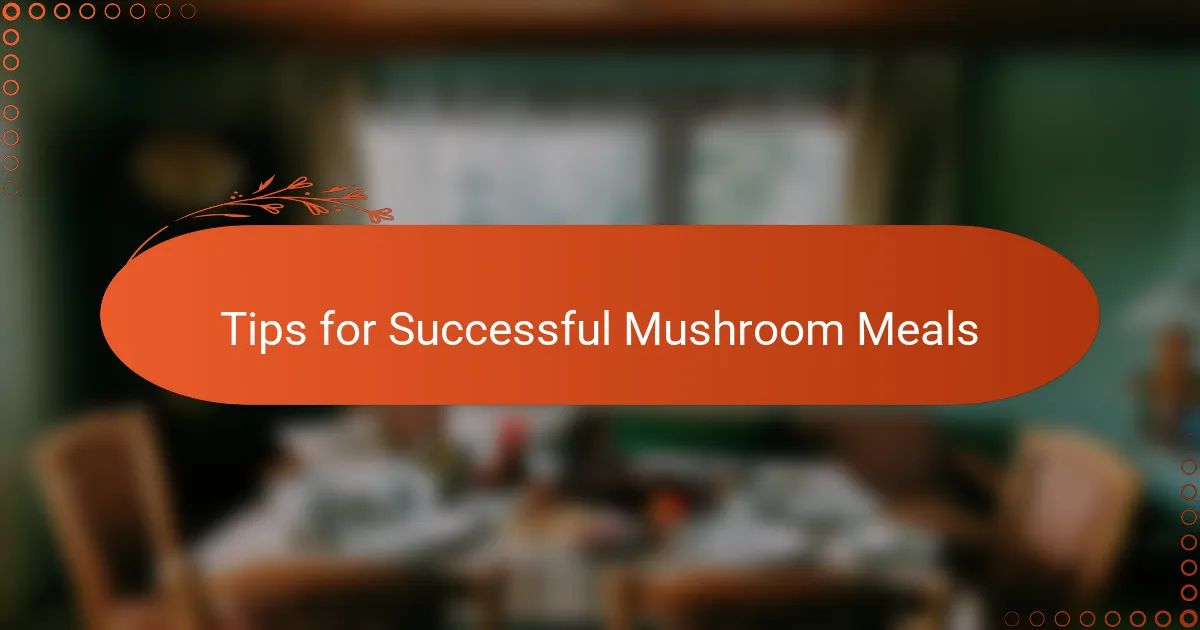
Tips for Successful Mushroom Meals
One thing I’ve learned is that the secret to successful mushroom meals often lies in treating these ingredients with a bit of care and patience. For example, gently cleaning mushrooms instead of rinsing them under water preserves their natural texture and flavor, something I discovered after a few soggy attempts early on. Have you ever noticed how a little extra attention during prep can turn an ordinary dish into something memorable?
I also find that seasoning mushrooms is an art in itself. Overpowering their delicate earthiness with too much spice or salt can easily ruin the balance. When I first started cooking with chanterelles, a simple seasoning of salt, pepper, and fresh herbs made all the difference—there’s nothing quite like letting the mushrooms truly shine on their own.
Lastly, timing is crucial, especially when cooking mushrooms in mixed dishes. Adding them too early often leads to a rubbery texture, which I learned the hard way during a mushroom risotto attempt. Now, I always add them toward the end to maintain that perfect bite. Have you ever experimented with the cooking order to find what brings out the best in mushrooms? It really transforms the whole experience.

